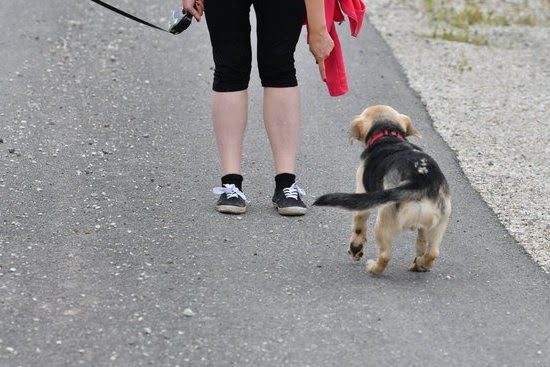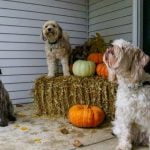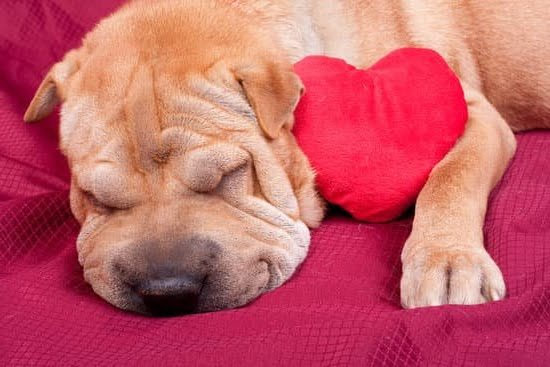How To Train A Dog To Use A Potty Area
There are many benefits to house training your dog. Not only will your dog be able to relieve herself in an appropriate place, but you will also have less cleaning up to do.
There are a variety of methods you can use to train your dog to use a potty area. One popular method is to use positive reinforcement. Whenever your dog uses the potty area, give her a treat and lots of praise.
Another method is to use a cue. When your dog is ready to go to the bathroom, give her a cue, such as “outside” or “potty.” Once she starts going to the bathroom in the correct place, give her a treat and praise her.
It’s important to be patient when house training your dog. Each dog will learn at her own pace. If your dog has an accident in the house, don’t punish her. Simply clean it up and continue to train her using positive reinforcement or a cue.
With a little patience and persistence, you can train your dog to use a potty area.
How To Potty Train A Big Dog
Potty training a big dog can be a daunting task. But with a little patience and some basic tips, you can have your pup trained in no time.
1. Start with a small area. When potty training a big dog, it’s important to start with a small area. This will help your dog learn where to go potty and make the process a little less overwhelming. Choose an area in your backyard or inside your home where your pup can easily access a potty pad, newspaper, or designated spot outdoors.
2. Be consistent. One of the most important things when potty training a big dog is to be consistent. This means taking your pup to the same spot each and every time and rewarding them for going potty in the right place.
3. Use a cue. When your pup is ready, start using a cue to let them know it’s time to go potty. You can say something like “go potty” or “do your business” each time you take them to the designated spot.
4. Reward your pup. After your pup goes potty in the right place, be sure to give them a big reward. This could be a treat, favorite toy, or plenty of praise. Rewarding your pup for going potty in the right place will help them learn the behavior faster.
5. Be patient. Potty training a big dog takes time and patience. Don’t get discouraged if your pup doesn’t get the hang of it right away. Just keep practicing and be consistent with your cues and rewards. With a little patience, your pup will be successfully potty trained in no time.
Why Would A Potty Trained Dog Poop In The House
There are a number of reasons why a potty trained dog might poop in the house, even after being successfully housebroken. One common reason is that the dog is not feeling well and is trying to tell its owner that it needs to go to the vet. Other reasons might include stress, anxiety, or accidentally being left alone in the house for too long. In some cases, a dog might start pooping in the house again after a period of being successfully potty trained because of a change in its environment or routine. If you’re having trouble getting your dog to stop pooping in the house, it’s important to consult with a professional dog trainer or behaviorist to help identify the root of the problem and develop a plan to fix it.
How To Potty Train A Dog Not Using A Crate
Potty training a dog can be a daunting task, but it doesn’t have to be using a crate. In fact, there are a few different ways to potty train a dog without using a crate. Each has its own set of pros and cons, so it’s important to choose the method that will work best for you and your dog.
One way to potty train a dog without using a crate is to use a potty training pad. This is a great option for dogs who are resistant to learning to go outside, or for puppies who are too young to be housebroken. The downside to potty training pads is that they can be expensive, and they can also create a mess if the dog misses the pad.
Another way to potty train a dog without using a crate is to use a designated potty area outside. This can be a good option for dogs who are resistant to going on pads or in specific spots inside the house. The downside to using a designated potty area is that it can be difficult to train the dog to go outside in bad weather, and it can also be difficult to keep the area clean.
The final way to potty train a dog without using a crate is to use a combination of both potty pads and designated potty areas. This is a good option for dogs who are resistant to learning either method alone. The downside to using a combination of methods is that it can be more difficult to train the dog, and it can also be more expensive.
No matter which method you choose, it’s important to be patient and consistent with your dog. Potty training can be a frustrating process, but it’s worth it in the end.
Why Are Male Dogs Harder To Potty Train
Male dogs are more difficult to potty train than female dogs for a few reasons. For one, their anatomy is a bit different. Male dogs have a penis and a scrotum, which makes it harder to aim in the right spot. They also have more muscles in their anal area, which means they can hold their pee and poop for longer. Male dogs also tend to be more curious about their surroundings, which can lead them to wander off and pee in inappropriate places.
The best way to potty train a male dog is to start early and be patient. You’ll need to be consistent with your commands and rewards, and make sure your dog has plenty of opportunities to pee and poop in the right places. If you catch your dog peeing or pooping in the wrong spot, make a loud noise (like clapping your hands) to startle him and then immediately take him to the appropriate spot to finish. Praise him when he goes in the right place, and give him a treat if you want. If you’re patient and consistent, your male dog should be potty trained in no time.

Welcome to the blog! I am a professional dog trainer and have been working with dogs for many years. In this blog, I will be discussing various topics related to dog training, including tips, tricks, and advice. I hope you find this information helpful and informative. Thanks for reading!





